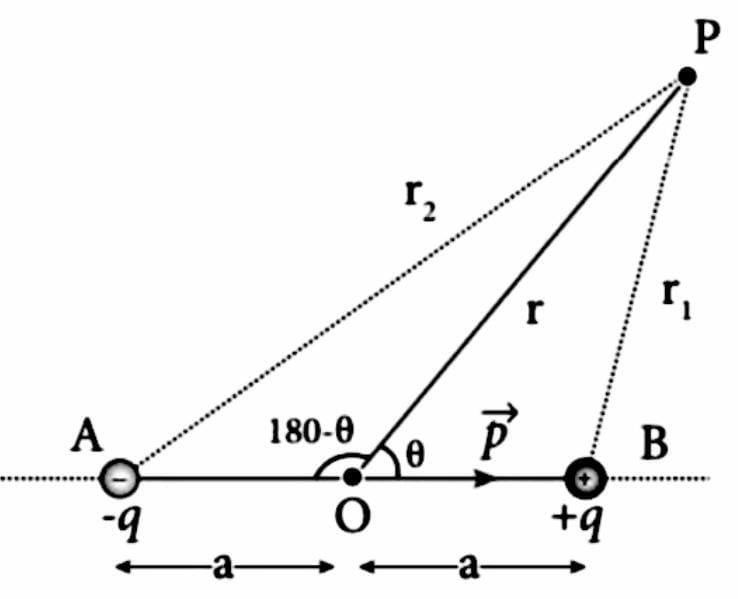Question
Question: A small electric dipole is of dipole moment p. The electric potential at a distance ‘r’ from the cen...
A small electric dipole is of dipole moment p. The electric potential at a distance ‘r’ from the center and making an angle θ with the axis of dipole will be:
Solution
Electric dipole is a couple of opposite charges given by q and -q. they are separated by the distance d. In this given space the direction of the dipole is always from -q to positive charge q. In the question we need to find potential at distance r from center. It is making an angle θ with the axis.
Formula Used:
V=4πε0Rq cosθ=2yzy2+z2−x2 (1+xn)=1+nxforx<<1
Complete step-by-step solution:

First of all we have the dipole with charges q and -q at the ends.
The potential at the distance ‘r’ can be found out as follows:
First from the figure we will get,
Cosine formula for any triangle.
Here, z is hypotenuse.
According to our dimensions
cosθ=2rar2+a2−r12 ⇒r12=r2+a2−2racosθ
By taking square root on both sides we get,
r1=(r2+a2−2racosθ)21 taking′r′common ⇒r1=r[1−racosθ]21
Now using the identity,
(1+xn)=1+nxforx<<1
We get,
r1=r[1−racosθ] thisgives ⇒r1=r−acosθ ⇒r2=r+acosθ
We know for the potential we need to find individual potentials from each charge and add them. So,
V=4πε0Rq addingall ⇒V=4πε0r1q+4πε0r2q
Putting the values taken found out above and solving,
⇒4πε0q[r−acosθ1−r+acosθ1] ⇒4πε0q[r2−a2cos2θr+acosθ−r+acosθ]
Further solving the equations and neglecting a as it is very small we get
Asp=q(2a) ⇒V=4πε0(r2−a2cos2θ)pcosθ ⇒V=4πε0(r2)pcosθ.....(ifaissmall)
Note: Potential at the point is always an addition of potential due to all charges/dipoles. Potential negative means whatever the system is under study it is stable. If potential is positive it is an unstable system. Force varies inversely with square of the distance and potential inversely with first power of distance.
